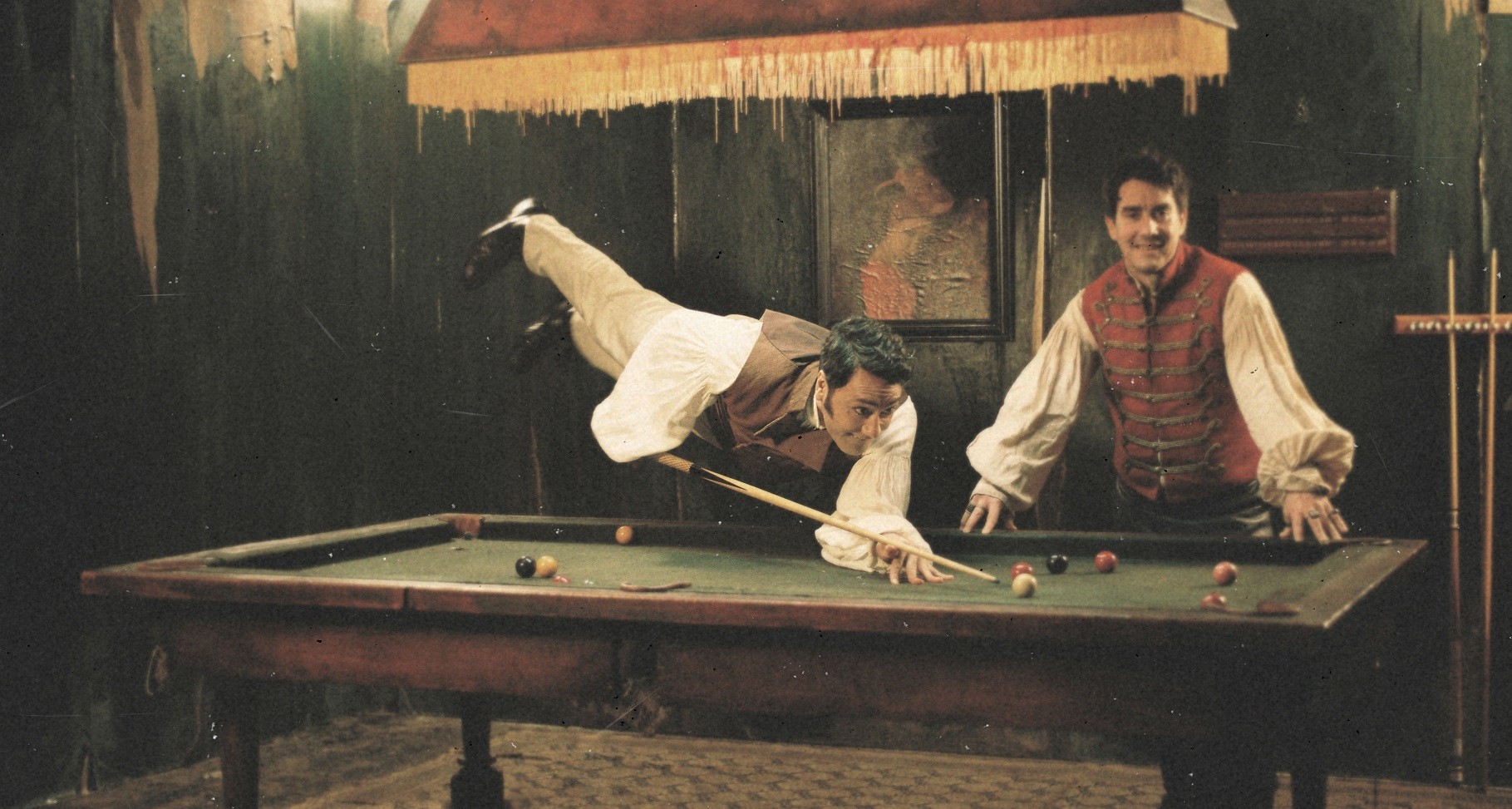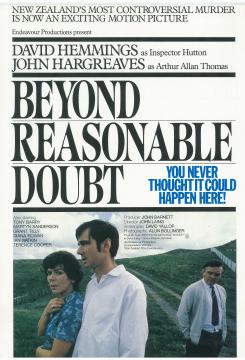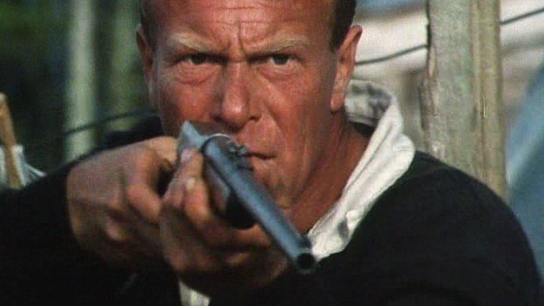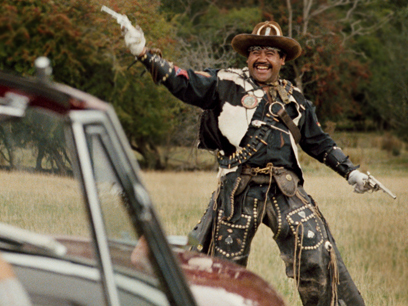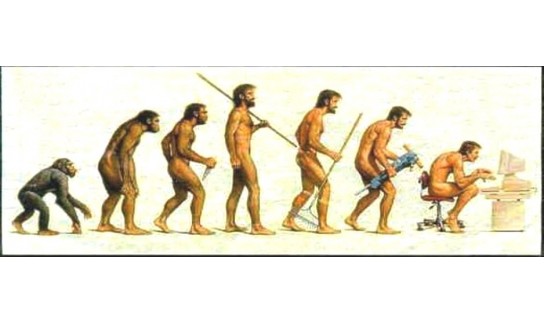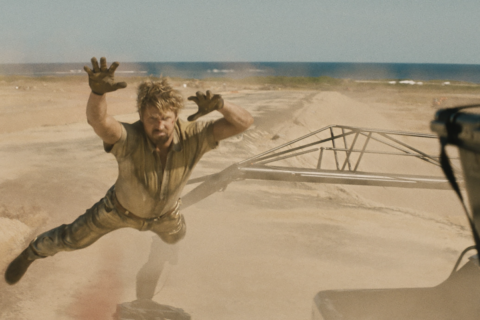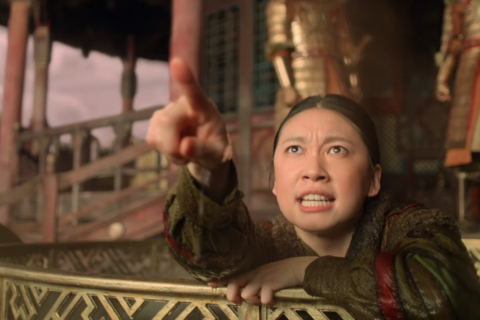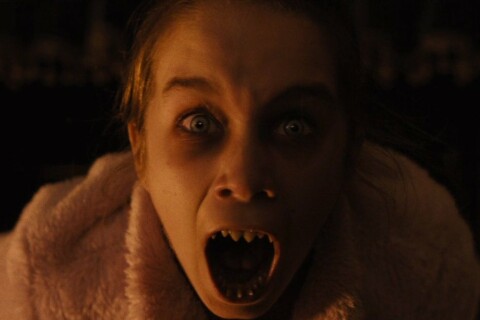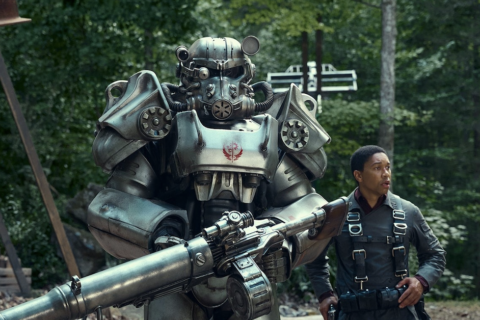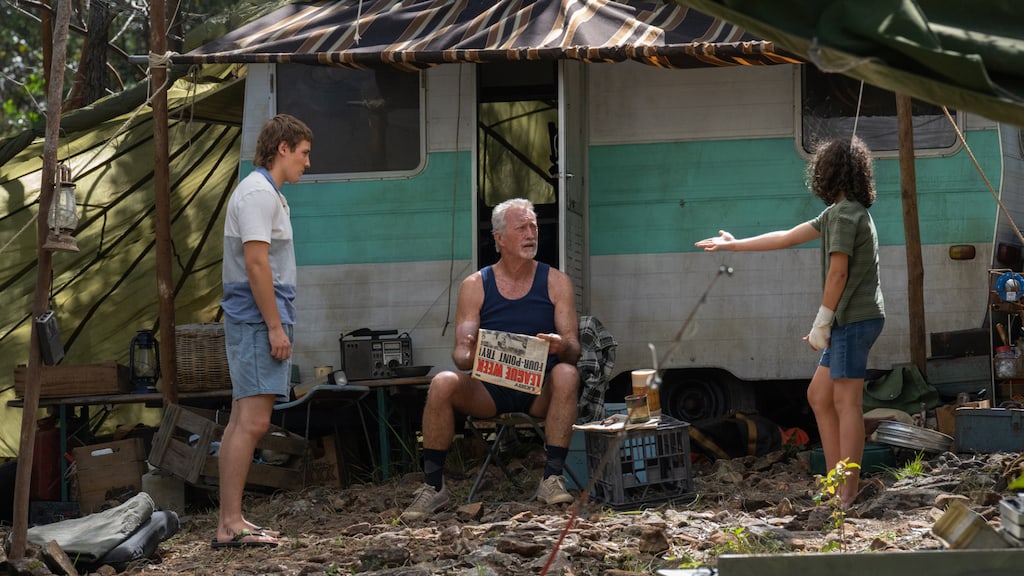Through most of our long cinematic history we’ve hated our own films, but ANDREW JOHNSTONE finds 14 pieces of pure filmic gold that beautifully convey our developing cultural history.
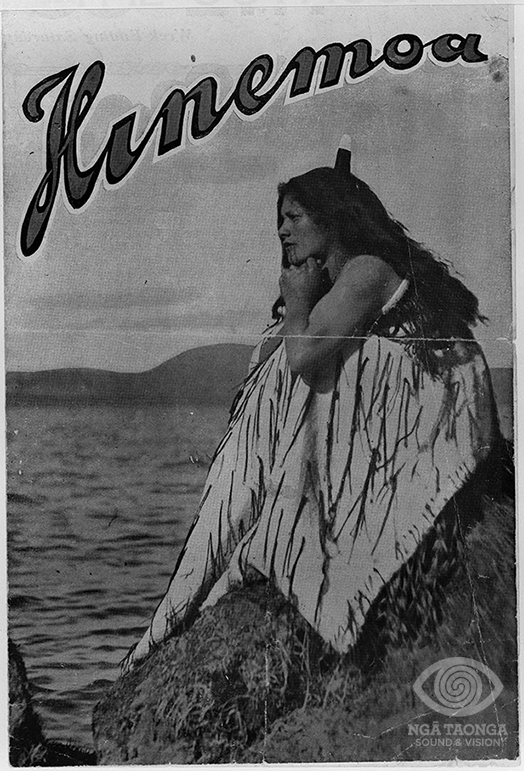 I tried to count all the feature films ever made in New Zealand, but I have never been very good with numbers and got about halfway through the list before I lost my place. By the time I fumbled the third go I was over it, so let’s just say about 250 films have been made in New Zealand, including television films and big screen feature films. This includes a handful of overseas productions that have been made entirely here, and excludes dozens of others (mostly Hollywood and Bollywood) that have been partially made here.
I tried to count all the feature films ever made in New Zealand, but I have never been very good with numbers and got about halfway through the list before I lost my place. By the time I fumbled the third go I was over it, so let’s just say about 250 films have been made in New Zealand, including television films and big screen feature films. This includes a handful of overseas productions that have been made entirely here, and excludes dozens of others (mostly Hollywood and Bollywood) that have been partially made here.
The first feature was by Gaston Méliès, brother of legendary pioneering French film director Georges Méliès (A Trip To The Moon, 1902). The Méliès brothers were struggling financially, so Gaston was sent out into the wider world in search of the exotic, and hopefully a reversal of fortune. It didn’t work, but Gaston managed to make three fictional narratives, one feature documentary and a series of documentary shorts.
The first of these was a film called Hinemoa (1913) of which no copies survive, but it’s the example that matters here. Gaston inspired the locals, and in 1914 the first NZ film proper was made. This was also called Hinemoa, and was based on the same story about a Maori princess and her lover. That we made any movies at all so early on is a miracle in itself, considering the lack of population, resources and technology, but that’s Kiwis for you – always keen to try new things using whatever is at hand.
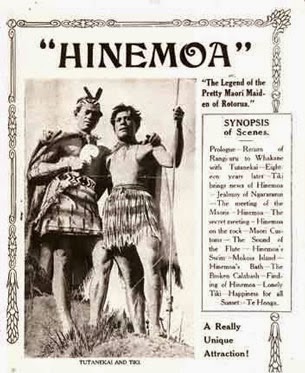 It took until the 1980s for the industry to fully engage, and another 20 years for it to build up a full head of steam. These days film is a major industry and is pumping out a regular diet of art, box office and blockbuster, some of it successful, some not.
It took until the 1980s for the industry to fully engage, and another 20 years for it to build up a full head of steam. These days film is a major industry and is pumping out a regular diet of art, box office and blockbuster, some of it successful, some not.
As for the best of New Zealand film, I am offering a subjective list that is mostly way off beam with mainstream thinking on the subject. A good friend who is an authority on the subject thinks my Kiwi favourites are mostly ludicrous, but to be fair, while his list is politically correct, it is also hard work as in “bloody hell, these films are difficult to watch.” We agree to disagree.
Except for Once Were Warriors, nothing from funding agency the NZ Film Commission is on my list. New Zealand On Screen is a taxpayer-funded archive of all things film and television, and the essential guide to New Zealand’s screen heritage.
Beyond Reasonable Doubt (1980)
Dairy farmer Arthur Allen Thomas is accused of murdering his neighbours Harvey and Jeanette Crewe. The police can’t prove it so fix the evidence and have Thomas put away. Years of re-trials and government commissions follow before Thomas is finally set free and richly compensated. For almost a decade this story gripped the nation and the whole sordid affair is neatly summed up in a film renowned film critic Roger Ebert called ‘remarkable’. The case has never been solved.
Dairy farmer Stanley Graham is under pressure. He snaps and starts shooting people. Seven bodies later and Graham’s rampage is over. Based on actual events from the summer of 1941, this economical portrait of a man being undone by paranoia is a triumph for both British director Mike Newell (Harry Potter And The Goblet Of Fire) and Aussie actor Jack Thompson (Graham). PS, No accident that two of the films on this list are set on dairy farms. Dairy is our biggest brand and the farm can be an interesting place. Worth a look is fantasy/romance The Price Of Milk (2000) and sheep farming drama Mahana (2016). The latter features the endlessly reliable Temuera Morrison (Jake the Muss from Once Were Warriors).
https://www.youtube.com/watch?v=JG2s4hYqsLg
Out Of The Blue (2006)
In 1998 a man wrestling with demons and paranoia starts shooting the people of Aramoana. David Grey prowls about the village taking pot shots at pursuing police while locals hide as best they can. Harrowing and intense, this ‘based on actual events’ thriller is a formative example of ‘the cinema of unease’, a term coined by Kiwi film star Sam Neil to describe the nation’s brooding film style.
Once Were Warriors (1994)
‘Jake the Muss’ is disenfranchised and drinking heavily. His emotional state is precarious, his temper is explosive and his shell-shocked family is riding his chaotic wake, their heads barely above water. We flocked to the cinema in our droves to see the worst of ourselves writ large on the big screen. It was a huge success critically, culturally and financially. Director Lee Tamahori turned New Zealand cinema on its head, and actor Temuera Morrison gave the performance of a lifetime. This is not just a great NZ film; this is masterful cinema.
What Becomes Of the Broken Hearted? (1999)
Though not the cinematic powerhouse of Once Were Warriors, its sequel has its moments. Jake has calmed down but still struggles with demons and misdemeanors. When his past stands up and slaps him across the face one day, he finds himself at a turning point. On offer is the opportunity for redemption, and he is of two minds. Despite its occasional slide into predictability, the film has enough heart to carry it through to a satisfying conclusion.
Forgotten Silver (1995)
Peter Jackson (The Hobbit, Lord Of The Rings) is a force of nature, but before the big Hollywood blockbusters came a whole other career that includes a couple of splatter films, a musical helmed by foul mouthed puppets and art-cinema classic Heavenly Creatures, based on another ‘true life’ Kiwi murder. The killing narrative is a right of passage in Kiwi film, and Jackson’s done it twice. The Lovely Bones (2009) was controversial and poorly received but it has its defenders.
Documentary Forgotten Silver explores the life of pioneering Kiwi filmmaker Colin McKenzie, whose achievements included the invention of colour and sound film. But there is more, so much more. McKenzie, it appears, was a towering genius, confirming the unspoken truth about NZ: that we are indeed a special and blessed people. It turned out to be a well-executed hoax that left many red-faced and others outraged. It is my favourite Jackson and joke aside, it is a well-made film.
The Locals (2003)
The Waikato is better known as the land that powers the nation’s behemoth Dairy Industry but it has also been the locale for two of the more interesting films made in this country. The region’s capital serves as the backdrop for Geoff Murphy’s 1985 sci-fi mystery The Quiet Earth, and the bucolic farmland is the canvas for Greg Page’s supernatural thriller, The Locals. Page migrated to the region from further South in his late youth, and cut his teeth making music videos for Hamilton city bands. The Locals is the only feature film in his catalogue but sums up the region’s landscape, atmosphere and culture with a clarity no one else has yet to match. The Locals is a smartly executed film full of ironic Kiwi sensibility. The soundtrack features superstar Waikato rockers The Datsuns, and it flies by at a rapid rate of knots, much like the director himself. Criminally underrated, it is well deserving of rediscovery and adulation.
https://www.youtube.com/watch?v=wIT5hgRgsD4
The Devil Dared Me To (2007)
The dominant feature of Kiwi film humour is a strain of ironic absurdism not unlike that which you might find in Irish films, and when you consider that some six hundred thousand out of a population of four and an half million claim Irish ancestry, this seems a reasonable supposition. As for the narrative: Stuntman Randy Campbell has a dream, he wants to become the world’s greatest stuntman by becoming the first person to leap across Cook Strait on a motorcycle. Before his dream can be realised, numerous obstacles have to overcome – a classic hero’s quest. Base, absurdist, cheesy and surreal, The Devil Dared Me Too is as warming as a petrol station pie on a cold day.
What We Do In The Shadows (2014)
Writer Director Taika Waititi has had a phenomenal run at the NZ box office and his films Boy (2010) and Hunt For The Wilderpeople (2016) are the two biggest-ever grossing NZ films respectively. What We Do In The Shadows, made in collaboration with Jemaine Clement (Flight Of The Conchords), was also a big hit and possibly one of the best examples of the dry, ‘straight-faced’ style that dominates Kiwi humour. More cohesive and refined than The Devil Dared Me To, it was an instant cult classic. Perhaps our best ‘cult’ product since Hamiltonian Richard O’Brien thought up The Rocky Horror Picture Show back in the late 1960s.
Desperate Remedies (1993)
This is not the kind of film I would choose to see off my own bat, but when I asked Geoff Lealand (Associate Professor of Film and Media Studies at University of Waikato and all-round doyen of all thing cinematic in NZ) what his favourite Kiwi film was, he said this. A surreal psychodrama set in early colonial New Zealand, it tastes like a ‘golden age’ MGM spectacular directed by Stanley Kubrick by way of Orson Welles with Ken Russell in as the production supervisor. The result is unique, a bit like ‘splatter era’ Peter Jackson on opium. A grand testament to the tightly guarded madness lurking beneath the Kiwi facade.
https://www.youtube.com/watch?v=M9lsNi-dfOY
The World’s Fastest Indian (2005)
Roger Donaldson was born in Australia and migrated to New Zealand (which is confusing in itself, as the migration trend is mostly the other way around) and made two defining local films: Sleeping Dogs (1977) and Smash Palace (1981). After a long Hollywood stint he returned to his adopted homeland for The World’s Fastest Indian in 2005. Invercargill Burt Munro and his Indian go to America and break a number of motorcycle speed records on the salt flats of Utah along the way. Welshman Anthony Hopkins manages a reasonable facsimile of the Kiwi accent while leading a charming biopic that is as honest as the day is long.
Sleeping Dogs (1977)
Roger Donaldson’s first film arrived on the scene at the most opportune moment. New Zealand was moving headlong into a period of social upheaval, and many old values were being asked hard questions and found wanting. Authoritarian prime minister Robert Muldoon (the model for the PM in the film?) was leading the rear guard action and this usually peaceful and bucolic land was getting restless. Smith (a somewhat startled looking Sam Neil in his first leading role) is a typically self-possessed Kiwi bloke reluctantly drawn into the fight against a dictatorial fascist government determined to maintain the hard line. Based on C.K Stead’s 1971 novel Smith’s Dream, this is a parable that set the nation alight and allowed us to imagine ourselves in a different way. Paradigms shifted, new doors were cast wide open and the modern NZ film industry was born. What followed was beautiful chaos.
Angel At My Table (1993)
The strange life of NZ writer Janet Frame is explored with inventive flair by acclaimed NZ filmmaker Jane Campion (The Piano). A critical and commercial success, this biopic is a riveting portrait of an artist struggling to swim with the tide. Rather than go on, here is a poem by Frame written in the last years of her life, and one of the better meditations I have encountered on the subject of aging and death. The film maintains a narrative of similar quality.
When The Sun Shines More Years Than Fear
– Janet Frame
When the sun shines more years than fear
when birds fly more miles than anger
when sky holds more bird
sails more cloud
shines more sun
than the palm of love carries hate,
even then shall I in this weary
seventy-year banquet say, Sunwaiter,
Birdwaiter, Skywaiter,
I have no hunger,
remove my plate.
Honourable Mention:
I was not taken by it at all when I saw it decades ago, but many of my peers rate it, so out of respect for them and my love of all things Billy T James I have added it to the list with the intention of watching it again soon. Based on a novel by Ronald Hugh Morrieson, Came A Hot Friday concerns a couple of grifters getting up to all kinds of mischief in Taranaki. Something of a rogue, Morrieson was not well considered in his Taranaki hometown of Hawera, and after he died they pulled down his house to make way for a McDonald’s, hoping to expunge his memory from the record. In reality, all the locals managed was to make Morrieson more famous. All four of his novels have been adapted for film, as have two of his short stories. The film features the late great Billy T James as The Tainuia Kid. According to legend, James was in character from the moment he arrived on set, and remained that way till the shoot was over. His prankster character is a testament to the man’s comedic genius. Check excerpts out here.
In contrast, here’s NZ On Screen’s List Of Essential New Zealand Films:
Goodbye Pork Pie (1981)
Smash Palace (1981)
Utu (1983)
Vigil (1984)
The Piano (1993)
Heavenly Creatures (1994)
Once Were Warriors (1994)
Whale Rider (2002)

